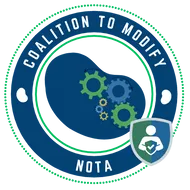The End Kidney Deaths Act Summary
The End Kidney Deaths Act is a ten year pilot program to provide a $50,000 refundable tax credit over five years to living kidney donors who give kidneys to strangers, those waiting the longest on the kidney waitlist. By the tenth year after the passage of the End Kidney Deaths Act, an estimated 60,000-100,000 Americans who were dying on the waitlist will instead have healthy kidneys, and taxpayers will have saved a $14-$25 billion.
Each month of delay for the enactment of the End Kidney Deaths Act will lead to 500 American lives lost due to the absence of incentivized strangers’ kidneys. This approach to alleviating the kidney shortage for the next decade is sensible and lifesaving.
Living kidney transplants are the gold standard for patients with kidney failure. A refundable tax credit means that the donor will receive either a tax credit or a check for five years of $10,000 per year. This tax credit will provide far more access to lifesaving transplants for the over 90,000 Americans currently on the kidney waitlist. 25% of them will die while waiting on the list for a kidney transplant. Every month, 1,000 Americans are removed from the waitlist because they died or became so sick they can no longer be transplanted. The total number of patients with kidney failure will likely exceed one million by 2030. The End Kidney Deaths Act will increase the number of living kidney transplants until, in the coming decade, an adequate kidney replacement from an animal or technological source is widely available.
For the past two decades, only around 300 non-directed donors each year have donated kidneys to strangers. Frequently, kidneys from non-directed donors are used to initiate a cluster of kidney transplants for incompatible donor/recipient pairs called kidney chains. The longest chain included 114 recipients. This multiplies the positive impact of non-directed donation. Non-directed donors do not include people who are donating on behalf of a specific person in a paired exchange or chain donation.
Kidney transplantation not only saves lives; it also saves money for the taxpayer. The United States government spends nearly $50 billion dollars per year (1% of all $5 trillion collected in annual taxes) to pay for 550,000 Americans to have dialysis, a cost of approximately $100,000 per year per patient, a treatment that is far more expensive than transplantation.
Living donors are spending more than 10% of their annual income on donations’ costs. The End Kidney Deaths Act will inspire far more people to donate their lifesaving kidneys to strangers.
Some believe that the kidney shortage could be ended by increasing donations from deceased donors, but that is incorrect. Fewer than one percent of deaths occur in a manner (in a hospital on a ventilator) that enables the organs to be recovered. Currently, the 60% of Americans who are registered as deceased donors provide kidneys for 21,000 Americans annually.
Removing all disincentives for living kidney donors has wide support within the transplant community. The American Medical Association “supports well-designed studies investigating the use of incentives, including valuable considerations, to increase living and deceased organ donation rates and will seek legislation necessary to remove legal barriers to research investigating the use of incentives, including valuable considerations, to increase rates of living and deceased organ donation.”
The End Kidney Deaths Act will supply more lifesaving kidneys to those who are currently underserved, primarily middle- and lower-income Americans, and rural kidney patients.
Eminent leaders in the transplant community as well as a multitude of kidney disease patients including recipients and donors support the End Kidney Deaths Act. When Americans want to support their community, Congress has provided them with financial incentives. For example, we have tax credits to support adoptive parents, home buying, electric vehicles, charitable contributions, and other pro-social activities. Kidney donation is consistent with this behavior that improves society at large.
Ninety-five percent of those who become living donors state that they would do it again if they could because saving a life is emotionally rewarding. Kidney donation is safer than childbirth and appendectomies. Most Americans believe living donors support using funds to increase donation rates. By providing a refundable tax credit to all living kidney donors who donate to strangers, the End Kidney Deaths Act will bring us closer to finally ending the preventable deaths from the tragic kidney shortage.

